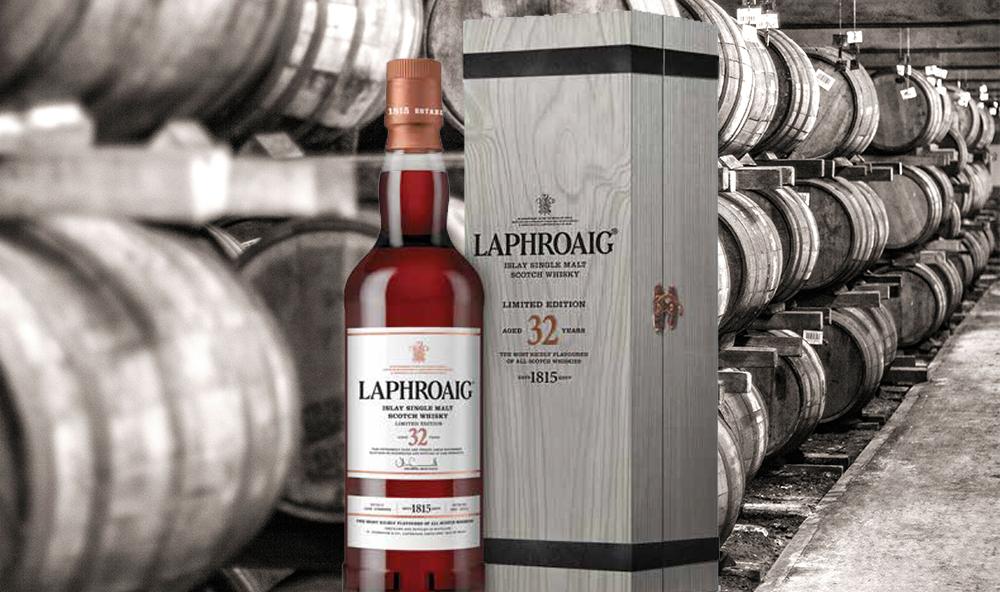Ah, Japan. Without a doubt the favourite of the few overseas countries I've visited. Modern and innovative, yet traditional and reserved. Everything is efficient and concise, and clean and quiet (except for the pachinko bars). And humility, courtesy, and attention to detail, are omnipresent in Japanese culture. All this and more, I feel, is also expressed in Japanese whisky!
I was recently lucky enough to attend a Japanese whisky tasting at the ever-brilliant
Cobbler, in Brisbane's West End. We were treated to seven whiskies from Suntory, including Yamazaki & Hakushu Distiller's Reserve's and 12yo's, and Hibiki Harmony, 12yo, and 17yo. Each whisky was also matched with a sashimi (raw seafood) food-pairing, custom-designed by our host, the walking, talking whisky library, and brand ambassador, Dan Woolley. I'll admit I'm not normally a huge fan of the usual sashimi, but these courses were delicious, and they matched very nicely with the light and clean whiskies.

Let's take a closer look at each of the whiskies and distilleries, and some of the history behind Suntory, Japan's largest spirits producer. They're also a big player by wider standards, particularly since acquiring Beam inc. in 2014, when they became the third largest spirits company in the world. Their Japanese whisky portfolio includes Yamazaki (pronounced 'yam-a-zaa-key') and Hakushu ('hack-ish-oo') single malt distilleries, Chita ('cheet-a') grain whisky distillery, and Hibiki ('hib-ee-key') blended whisky, which is a blend of the three aforementioned whiskies.
Whisky has been produced in Japan since the mid-19th century, when western culture was starting to become more popular. However, it was not wildly successful until the 1930's, with the arrival of a Japanese whisky that was tailored to Japanese tastes. Suntory released Kakubin, meaning 'square bottle', in 1937, and it has been Japan's biggest selling whisky for over 70 years. It was also recently launched in Australia, and although it's usually promoted as a mixer or cocktail whisky, it's also perfectly fine neat, especially when you consider the low pricing ($40-50)

Yamazaki is certainly the most widely known and available of the Japanese single malts, especially outside of Japan. The distillery was built near Osaka in 1923, by Suntory founder Shinjiro Torii, with the help of Masataka Taketsuru, who had learnt the art and science of whisky making at Glasgow university (he also worked at Hazelburn distillery in Campbelltown), and would later start rival whisky brand Nikka. Suntory was made famous by the movie Lost in Translation, which as it turns out was funded entirely by Suntory, and was released to coincide with the launch of Yamazaki in the USA.
The distillery features 12 stills, of different shapes and sizes, and uses 5 different types of cask to mature their malt, including Mizunara Japanese oak, which is very rare and expensive. In fact Suntory as a company are only permitted to cut down 10 Mizunara trees per year, to be made into casks. The different whiskies from each still and cask are then blended / married together to create Yamazaki single malt. We tasted two expressions on the night, the NAS Distiller's Reserve, and the 12yo. I believe both are
chill filtered, as is the case with most Japanese whiskies.
Yamazaki Distiller's Reserve, NAS, 43%. A blend / marriage of all the different styles produced by the distillery, including some matured in Japanese oak. Complex and fruity on the nose, with plum and peach, wood spice, toasted coconut and caramel. Quite spicy on the palate, with a hint of sherry and caramel sweetness, while the finish was quite light and drying, with some light oak at the end. The Distiller's Reserve was paired with fresh salmon sashimi, with a light ponzu-style dressing.
Yamazaki 12yo, 43%. Brighter and fruitier than the distiller's reserve on the nose, with more tropical fruit, some citrus and wood spice. Nicely balanced and soft on the palate, with sweet syrup, baking spices, dark caramel and citrus peel. Drier and spicier on the finish, some baked apple and vanilla. Paired with king-fish sashimi, which was excellent, and matched brilliantly. This was in fact the first Japanese whisky I tasted, at an Izakaya (casual bar/restaurant) in Kyoto, a few years ago. Getting harder to find now, though.
Our next stop on the Japanese whisky train was Hakushu distillery, which is my personal favourite. Located high in the Japanese southern alps, two hours west of Tokyo, Hakushu was built 50 years after Yamazaki, and at the time was the largest distillery in the world. The distillery houses a whopping 36 stills of varying shapes and sizes, although only 12 are currently in operation.

Hakushu distillery produces a very different style of malt to Yamazaki, largely thanks to the different climate, altitude, and surroundings. The distillery also does not use any Mizunara oak for maturation, instead using mainly ex-bourbon and ex-sherry casks. They also use a slightly larger (although still small) amount of peated barley in their mash bill, and have even released heavily peated expressions in the past. I've tasted one of those, and it was excellent! But, like many Japanese malts these days (thanks Jim Murray!), it's also very rare, and, if you can find it at all, expensive. We tasted the two main Hakushu expressions on the night, mirroring the Yamazaki offerings.
Hakushu Distiller's Reserve, NAS, 43%. A blend / marriage of all styles and cask types produced by the distillery. Nose: lighter, fresher and brighter than the Yamazaki. Sweet and light, more tropical fruit - baked pineapple, green banana, fresh pear. Light and sweet on the palate as well, with honeyed green fruits, and a little light spice. The finish is quite soft and delicate, and slightly herbal. Paired with prawn sashimi, which I'll admit didn't sound appealing to me, but luckily it was blasted with a blow-torch, and was pretty tasty.
Hakushu 12yo, 43%. Richer than the distiller's reserve, fresh green apples, slightly nutty, even a little subtle and soft smoke. Clean and fresh on the palate, tropical fruit, nutty again, and some soft spices. Soft and sweet on the finish, with very subtle smoke. Paired with freshwater scallop sashimi, which was absolutely mind-blowing. Definitely the best food pairing of the night for me, and the 12yo tied for my pick of the whiskies.
Our last stop for the evening was Hibiki, a blended Japanese whisky consisting of Yamazaki and Hakushu malt whisky, and Chita grain whisky. Interestingly, Hibiki is often finished in casks which have been seasoned with Umeshu (Japanese ume / plum liqueur), including some made from Mizunara. Hibiki translates to Harmony, which is what the blenders are looking for when they create an expression. While some may turn their noses up at blended whiskies, note that these are nothing like your typical Johnnie. Hibiki whiskies reflect the typical Japanese dedication to quality.
Hibiki whiskies are also well known for their bottle designs, which are really more like decanters. Each has 24 facets, representing the 24 seasons of the old Japanese lunar calendar, and a cork stopper (plastic screw caps are more commonly used by Suntory). And in the case of the 17, 21 and 30 year old bottling's, the labels are made from 'washi', a traditional Japanese paper. So these are very nicely presented whiskies.
This was actually my first time tasting the Hibiki 'Harmony', which is the latest release. I had tasted the 12yo and 17yo previously, although the latter was tasted not long after a dram of
Heartwood, and that's quite a hard act to follow!
Hibiki Harmony, NAS, 43%. Rich and syrupy on the nose, with red and stone fruits, and a little spice. Meatier and warmer mouth-feel than the single malts, but still well balanced and clean. Plums in syrup on the palate, some wood spice and treacle. Soft finish with some more spice. Paired with yellow-fin tuna sashimi, which was a bit of a stretch for me, but did work nicely with the whisky.
Hibiki 12yo, 43%. More focused and concentrated on the nose, still fruity and lightly spiced. Impressive texture for the low strength. Sweet molasses / golden syrup on the palate, with some darker stone fruit. Soft on the finish again, with more darker fruits in syrup. This one was paired with sea urchin sashimi, wrapped in nori (dried seaweed sheets) with some sushi rice.
Hibiki 17yo, 43%. Sweeter and richer on the nose, lighter fruits now. Still with the same rich, weighty texture, despite the low strength. Balanced and quite complex on the palate, with more molasses, lighter stone fruit, some wood spice, and a hint of sherry. Longer and more complex on the finish as well, still quite rich and fruity. This one was paired with our dessert course, which was matcha (green tea) sponge with sweet red bean paste and matcha mousse. The 17yo tied with the Hakushu 12 for my pick of the evening's whiskies. Very nice.
The Hibiki 17 isn't particularly cheap, at around $180 AUD, but let's keep in mind that that's less than Johnnie Walker Blue Label, which is also inferior, in my opinion, and is bottled without an age statement and at a lower strength. Remember that age statements must reflect the minimum age of the whisky/whiskies in the bottle, so there will also be older stock in there. Plus with all of the Hibiki's, you're also getting a free decanter, once you've completed the horrible task of drinking the whisky!
So, while all of these Japanese whiskies were very enjoyable and are certainly great quality, the Hakushu 12yo and Hibiki 17yo were my personal picks of the night. And that scallop we were served with the Hakushu was absolutely incredible! It was a real flavour explosion, and a real credit to our chef and his team.
If you are yet to try a Japanese whisky, I highly recommend it. They're quite different to Scotch, I think. They're generally quite light and fresh, and most are quite well balanced. Both the Hakushu and Yamazaki Distiller's Reserve bottling's are quite well priced, and would make for an ideal introductory Japanese malt.
There are plenty of options for the more experienced enthusiast as well, including some heavily peated and some super-expensive bottling's. For an example, Cobbler has a bottle of very rare 25 year old Yamazaki behind the bar, which is priced at over $300, per nip! And if you can find a bottle for sale at auction, which is unlikely, you can expect to part with at least $5,000. Which is enough to buy four bottles of the recently released 32 year old Laphroaig. So it's really quite a rare thing!
Dan also shared plenty of his knowledge with us during the tasting, and I must admit my own knowledge of the history of Japanese whisky was a little lacking, at least prior to this event! As I mentioned earlier he also did a fantastic job designing our food pairings. Each course of sashimi was light and refreshing, with plenty of different textures and flavours to experience and explore along with the whisky. Next time you're enjoying some sashimi (or anything else, for that matter) at a Japanese restaurant, I suggest ordering a Japanese whisky with it, for something a little different. And for relaxing times, make it Suntory time...
A big thanks to Dan Woolley, Cobbler, and Beam Suntory / CCA for putting on another brilliant tasting, and for having me along. See you at the next one!
Kanpai!



























